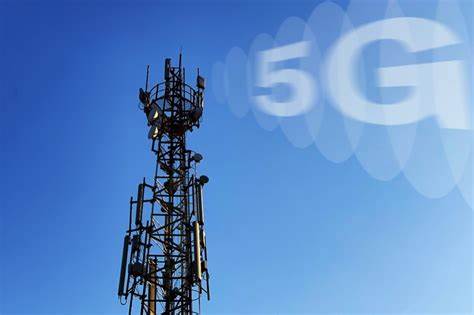5G Base Station Antenna: A Comprehensive Guide to Choosing the Best One
Table of Contents:
I. Introduction
II. Understanding 5G Base Station Antennas
III. Frequency Bands
IV. Antenna Design
V. MIMO Technology
VI. Beamforming Technology
VII. Gain and Directivity
VIII. Polarization
IX. Mounting Options
X. Choosing the Right 5G Base Station Antenna
XI. Conclusion

I. Introduction
As 5G networks continue to roll out around the world, choosing the right 5G base station antenna has become increasingly important. With new frequency bands, advanced antenna designs, and cutting-edge beamforming technology, 5G base station antennas are more complex than ever before. In this guide, we’ll take a deep dive into everything you need to know about 5G base station antennas, including frequency bands, antenna design, MIMO technology, beamforming technology, gain and directivity, polarization, and mounting options.
II. Understanding 5G Base Station Antennas
A 5G base station antenna is a device that converts electrical energy into electromagnetic waves that can carry signals over a distance. With 5G networks, base station antennas are designed to operate within new frequency bands, including 600 MHz to 6 GHz and 24 to 86 GHz.
III. Frequency Bands
When choosing a 5G base station antenna, it’s important to consider the specific frequency bands it is designed to operate within. Different bands have different characteristics, and it’s important to choose an antenna that is compatible with the frequency bands you need to use.
IV. Antenna Design
There are several different designs of 5G base station antennas, each with its own benefits and drawbacks. Some common designs include dipole antennas, patch antennas, and slot antennas. Dipole antennas are simple and easy to construct, but they are omnidirectional and have relatively low gain. Patch antennas are directional and offer higher gain, but they are more complex to construct. Slot antennas offer wider bandwidth and can be used for both transmit and receive signals.
V. MIMO Technology
MIMO (multiple input, multiple output) technology is a key feature of 5G base station antennas. MIMO technology allows for the use of multiple antennas to improve capacity, increase data rates, and reduce interference.
VI. Beamforming Technology
Beamforming technology is another advanced feature of 5G base station antennas. Beamforming allows for the directional focusing of the antenna’s radiation pattern, increasing the signal strength and reducing interference.
VII. Gain and Directivity
The gain of a 5G base station antenna refers to its ability to amplify signals. Directivity, on the other hand, refers to the antenna’s ability to focus its radiation pattern in a particular direction. Antennas with high gain and directivity are often preferred for long-range communication, while antennas with lower gain and directivity are better suited for short-range communication.
VIII. Polarization
Polarization refers to the orientation of the electric and magnetic fields within an electromagnetic wave. 5G base station antennas can be either vertically or horizontally polarized, and it’s important to choose an antenna with the correct polarization to match the polarization of the signals you are transmitting or receiving.
IX. Mounting Options
5G base station antennas can be mounted in a variety of different ways, including on rooftops, towers, or poles. It’s important to choose a mounting option that is secure, stable, and provides the necessary elevation for optimal performance.
X. Choosing the Right 5G Base Station Antenna
When choosing the right 5G base station antenna, it’s important to consider all of the factors discussed above. This includes the specific frequency bands, antenna design, MIMO technology, beamforming technology, gain and directivity, polarization, and mounting options that best suit your needs. It may also be helpful to consult with an expert in the field to ensure that you are making the best choice for your specific application.
XI. Conclusion
With the emergence of 5G networks, choosing the right base station antenna is more important than ever. By understanding the basic principles of 5G base station antenna design and the specific features that make one antenna better suited for certain applications than another, you can make an informed decision that will provide clear and reliable communication for years to come. With the right 5G base station antenna, you can take advantage of the lightning-fast speeds and low latency of 5G networks, providing your team with the communication tools they need to stay connected and stay ahead of the curve.

 Mobile Signal Booster
Mobile Signal Booster